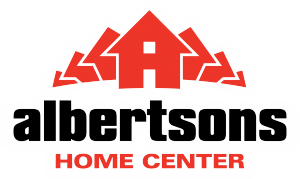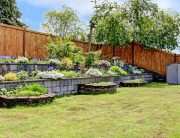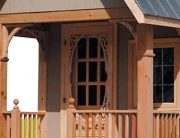Job Description
A simple, yet classic porch table adds functionality and elegance to your front porch.
Lumber Required:
- 6 pieces of 2″ x 4″ – 8 foot length
- 3 pieces of 1″ x 6″ – 8 foot length
Materials List:
- 33 linear feet of 1 x 4 pine
- 6 linear feet of 1 x 1 pine
- 7 linear feet of 1 x 6 pine
- Scrap Wood
- 120 – 1 1/4″ wood screws
- 10 – 2 1/2″ wood screws
- 20 – 1 5/8″ wood screws
- Glue
Tools Needed:
- Circular Saw or Handsaw
- Miter
- Screwdriver
- Straight Edge
- Tape Measure

Step 1 – Building the side assemblies
The table consists of two side assemblies: a front assembly and a back one. See figure 2 to build these assemblies. To make the side assemblies cut two Side Connectors (A) from 1 x 4 pine x 15-1/2″. Cut four Legs (B) from 1 x 4 pine x 16″. Position one Side Connector (A) over two Legs (B), spacing the pieces as shown in figure 1. The upper end of the Side Connector (A) with the ends of the Legs (B) and there should be a 3/4″ offset at each end of the Side Connector (A). Apply glue to the meeting surfaces, and screw through the Side Connector (A) into the Legs (B) using two 1-1/4″ wood screws on each joint.
Cut two Side Spacers (C) from 1 x 4 pine x 15-1/2″. Place one Side Spacer (C) between the two Legs (B), as shown in figure 1. Apply glue to the meeting surfaces, and screw through the Side Connector (A) into the Side Spacer (C) using three evenly spaced 1-1/4″ wood screws. Repeat the previous steps to build the second assembly using the remaining two Legs (B), the remaining Side Connector (A) and Side Spacer (C).

Step 2 – Building the front and back assemblies
The front and back assemblies are build in the same fashion as the side assemblies (see figure 1). Cut four Legs (B) from 1 x 4 pine x 16″. Cut two Front/Back Connectors (D) from 1 x 4 pine x 14″. Assemble two Legs (B) and one Front/Back Connector (D), spacing the pieces as shown in figure 1. The pieces should be flush at the top and there should be a 3/4″ offset at the ends of the Front/Back Connector (D). Secure the joints with glue and two 1-1/4″ wood screws.
Cut two Front/Back Spacers (E) from 1 x 4 pine x 8-1/2″ long. Insert one Front/Back Spacer (E) between the two Legs (B). Apply glue to the meeting surfaces, and screw through the Front/Back Connector (D) into the Front/Back Spacer (E) using three evenly spaced 1-1/4″ wood screws. Repeat the previous steps to build a back assembly identical to the front one, using the remaining two Legs (B), the remaining Front/Back Connector (D) and Front/Back Spacer (E).

Step 3 – Joining the assemblies
Attach the two side assemblies as shown in figure 2 making sure that the Legs (B) are flush at the top and bottom. The front and back assemblies will overlap the exposed ends of the side assemblies. When properly assembled, the outside of the table should measure 15-1/2″ x 18-1/2″. Apply glue to the meeting surfaces, and screw through the overlapping Legs (B) into the adjoining Legs (B), using 1-1/4″ wood screws spaced every 5″. Cut four Leg Supports (F) from 1 x 1 pine x 16″ long. Apply glue to the meeting surfaces and attach one Leg Support (F) to the inside corner of each of the four leg assemblies, as shown in figure 3. Screw through the Leg Supports (F) into each of the Legs (B), using four evenly spaced 1-1/4″ wood screws.
Cut four Corner Supports (G) from 1 x 4 pine x 8 1/2″. Position each Corner Support (G) on its face and miter the ends at opposing 45° as shown in figure 4. Using figure 5 as a guide, position the mitered each Corner Supports (G) making sure that their faces are flush with the top edges of the assembled frame. Apply glue to the meeting surfaces and screw at an angle through the edges of each of the Corner Supports (G) into the frame assembly, using a 2-1/2″ wood screw on each joint.



Step 4 – Adding the top
Cut three Top Slats (H) from 1 x 6 pine x 20″. Place the three Top Slats (H) over the top of the assembly, spacing them evenly so that the tabletop measure 17″ wide x 20″ long and the tabletop extends 3/4″ over the sides, back and front of the assembly, as shown in figure 6. Apply glue to the meeting surfaces, and screw through the Top Slats (H) into the Corner Supports (G), using 1-1/4″ wood screws.
Step 5 – Making the table tray
Cut two Long Tray Sides (I) from 1 x 4 pine x 22″. Cut two Short Tray Sides (J) from 1 x 4 pine x 17-1/2″. Position the two Long Tray Sides (I) on edge, parallel to each other and 17-1/2″ apart. Fit the two Short Tray Sides (J) between the ends of the Long Tray Sides (I), as shown in figure 7. Apply glue to the meeting surfaces, and screw through the Long Tray Sides (I) into the ends of the Short Tray Sides (J), using two 1-5/8″ wood screws on each joint.

Cut three Narrow Tray Slats (K) from 1 x 4 pine x 20 1/2″. Cut one Wide Tray Slat (L) from 1 x 6 pine x 20-1/2″. Place the assembled tray sides (I and J) on a flat surface. To elevate the Narrow and Wide Tray Slats (K and L), place several pieces of 1″ thick scrap wood inside the assembly. Then place the four Slats (K and L), inside the assembly, as shown in figure 8, spacing them evenly over the bottom. Apply glue to the meeting surfaces, and screw through the Short Tray Sides (J) into the Slats (K and L), using two 1-5/8″ wood screws on each joint.
Step 6 – Finishing
Fill any cracks, crevices or screw holes with wood filler. Sand the completed table and tray thoroughly. Paint or stain the table and tray the color of your choice or simply leave it natural.




